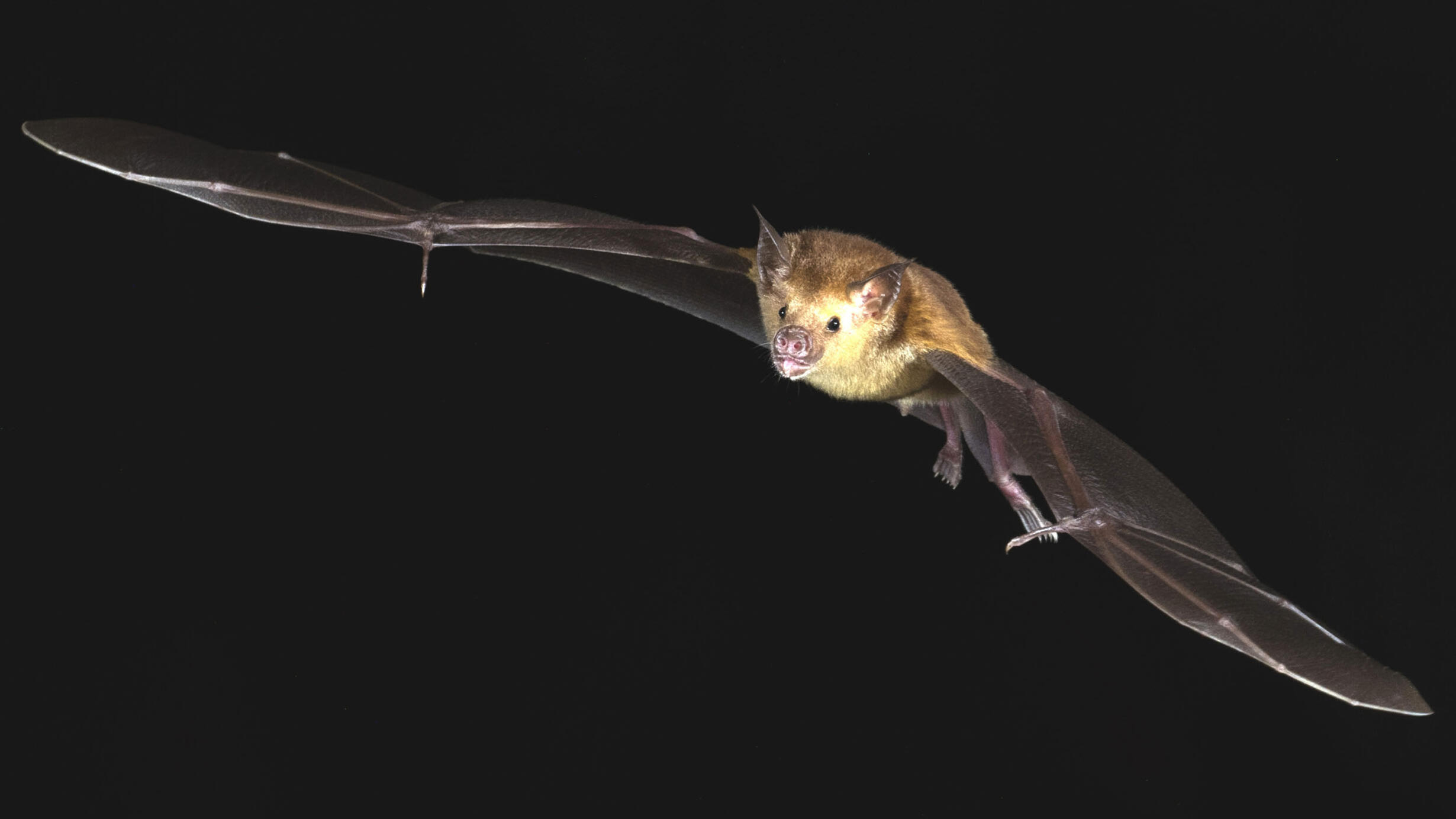 The buffy flower bat (Erophylla sezekorni) is a Caribbean species known to cross an ocean channel between the islands in the Bahamas.
The buffy flower bat (Erophylla sezekorni) is a Caribbean species known to cross an ocean channel between the islands in the Bahamas. © M. Brock Fenton
The buffy flower bat (Erophylla sezekorni) may be best known for its flower-shaped nose and pale, furry face, and for its unique behavior of crossing an ocean channel that separates islands in the Bahamas. But this Bahamian bat is of particular interest to scientists for another reason: the blood-feeding bat flies that feed on it.
Unlike many other parasites used to study a host organism, these flies (Trichobius frequens) switch among individuals of the same species throughout their lifetime. A new Museum-led study, published in the Journal of Parasitology, takes a close look at the genetic information of the buffy flower bat and its parasite flies to learn more about gene flow and connectivity of buffy flower bat populations across the islands.
“For many years, parasites like lice have been used to learn more about their hosts. They never leave their host individuals, and that makes for a really good model,” said lead author Kelly Speer, a comparative biology Ph.D.-degree candidate in the American Museum of Natural History’s Richard Gilder Graduate School. “But we’ve found that we can also use micropredator parasites—like bat flies—to give us details about their hosts, as long as the parasites are host-specific and use their host to be dispersed.”
K. Speer/© AMNH
Unlike other Caribbean bat species, the buffy flower bat is able to cross the ocean channel that separates the various islands of the Bahamas. The T. frequens flies deposit their larvae in a buffy flower bat’s roost and, after maturing into adulthood, the larvae begin feeding on host bats. When the researchers looked at T. frequens populations living on bats across four islands, two on either side of the channel, they found that bats belonged to a single population—indicating that the channel itself was not a universal barrier.
© N. Albury
But close examination of the genetic material from both the bats and the flies, of which there were two populations, also showed low dispersal among bat populations over the last two generations, or about two years. That finding suggests that something else has been impeding the bats’ gene flow.
“Changes in roost and foraging habitat availability could be playing the largest role here,” said co-author Nancy Albury, from the National Museum of The Bahamas. Buffy flower bats typically roost in caves and other subterranean habitats, but human populations can affect where bats choose to live.
“In the northern islands we surveyed, many of these bats roost in abandoned buildings, and in the southern islands, many of the caves are being filled with trash. As the population in the Bahamas continues to increase and tension builds between the natural habitat and altered habitat for human use, it’s important to know what the baseline is for this bat and this parasite,” said Albury.